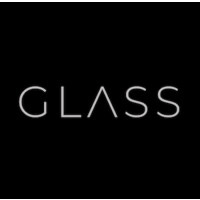Glass lenses bend light. GLASS Imaging bends expectations.
Let’s rewind. Two former Apple engineers, Ziv Attar and Tom Bishop, Ph.D., once helped your iPhone fake a DSLR’s depth of field with Portrait Mode. Ziv had already sold his last startup, LinX Imaging, to Apple back in 2015. Now? He’s back. And this time, he and Tom aren’t just polishing pixels, they’re gutting the optical rulebook and wiring image quality straight into the future.
Today, Glass Imaging closed a $20M Series A led by Insight Partners, with GV (Google Ventures), Future Ventures, and Abstract Ventures doubling down. The number isn’t just impressive, it’s inevitable. Because this isn’t another AI startup tossing filters on your selfies. Glass is building a neural image signal processor, GlassAI, that takes raw camera data and surgically corrects every lens flaw and sensor defect like a neural surgeon with a Ph.D. in light.
They don’t create details, they recover them. That’s the distinction. The flex is in the fidelity.
Their system doesn’t just look better. It sees better. Forget about stacking lenses like pancakes, Glass replaces traditional glass with software that mimics what should’ve been captured in the first place. Think sharper edges, richer textures, and natural bokeh, without bloated hardware. One demo with Qualcomm’s Snapdragon 8 Elite showed a Motorola Solutions Edge 40 Pro punching above the iPhone15Pr Max’s telephoto weight class. That’s not marketing. That’s DxOMark-verified.
The company’s roots may be in Los Altos, but their vision spans Tampere, Finland, where a new office taps into Europe’s deep imaging braintrust. With just 12 employees and an average salary shy of $113K, they’re lean, precise, and deadly serious about scale. That $31.5M in total funding isn’t just a bet on AI, it’s a statement that computation is the new optics.
Their roadmap stretches beyond phones. Drones. Wearables. Edge AI. GlassAI is already running on-device, real-time, making every gram of hardware sweat like it’s doing overtime. And while OEMs stay unnamed for now, let’s just say the conversations aren’t happening in a vacuum.
The AI Camera and Computational Photography markets are forecasted to top $160B by 2032. But Glass isn’t just chasing a slice. They’re redefining the pie. Their technology allows for 10x larger apertures and sensors twice the size of anything shipping today, all while thinning the module. That’s not a spec bump. That’s an architectural shift.
Let’s connect and keep the momentum going across the tech ecosystem. Whether you’re a founder shaping the future, a leader driving change, a VC backing bold ideas, or an investor spotting the next big thing—together, we’re pushing boundaries. Proud to be building the future with you.
Let’s connect on LinkedIn and Twitter (X), and keep the conversation going.



